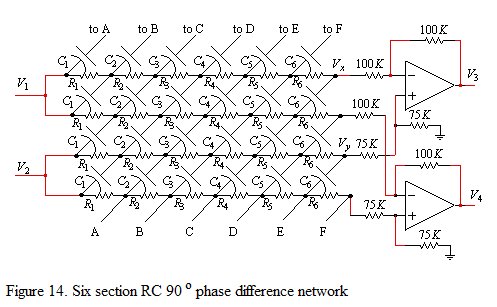goldsmith
Advanced Member level 6
- Joined
- Dec 14, 2010
- Messages
- 3,981
- Helped
- 741
- Reputation
- 1,486
- Reaction score
- 726
- Trophy points
- 1,413
- Location
- Tehran - IRAN
- Activity points
- 24,546
Dear All
Hi
Thank you for your time .
I know how can i create 90 degree phase shift for an specific frequency , but how to create it for a wide range of frequency ?
Thanks in Advance
Hi
Thank you for your time .
I know how can i create 90 degree phase shift for an specific frequency , but how to create it for a wide range of frequency ?
Thanks in Advance
